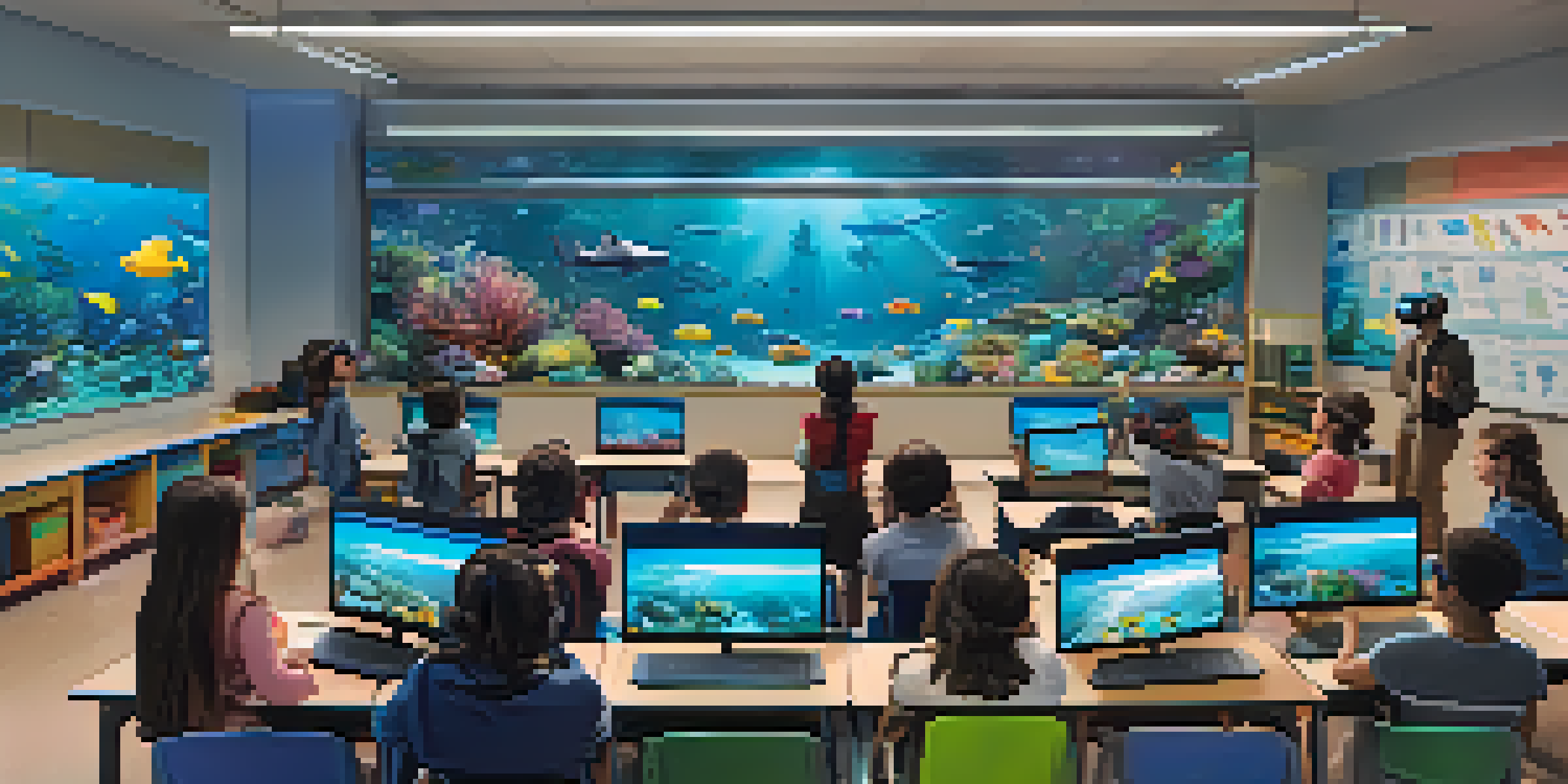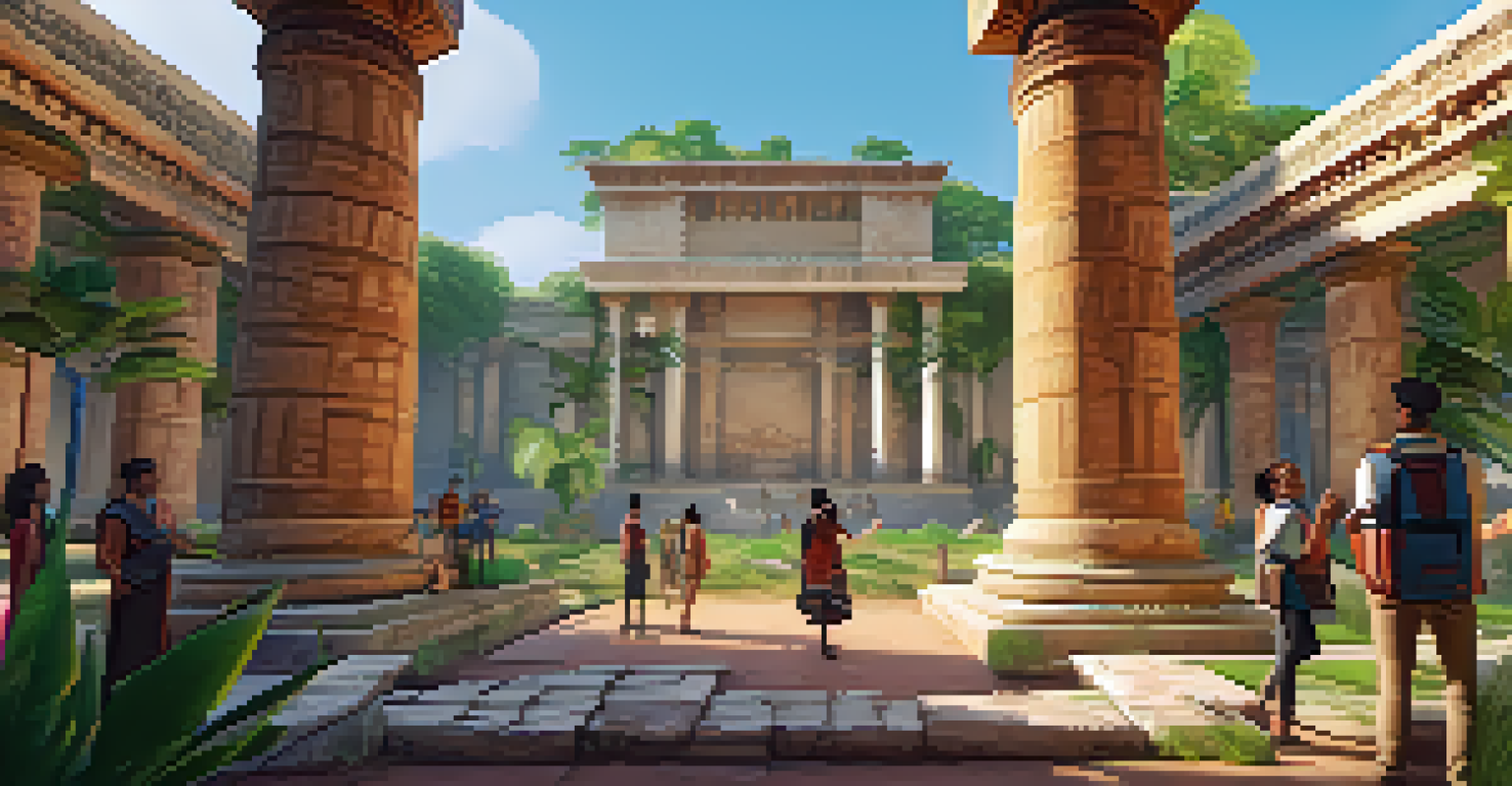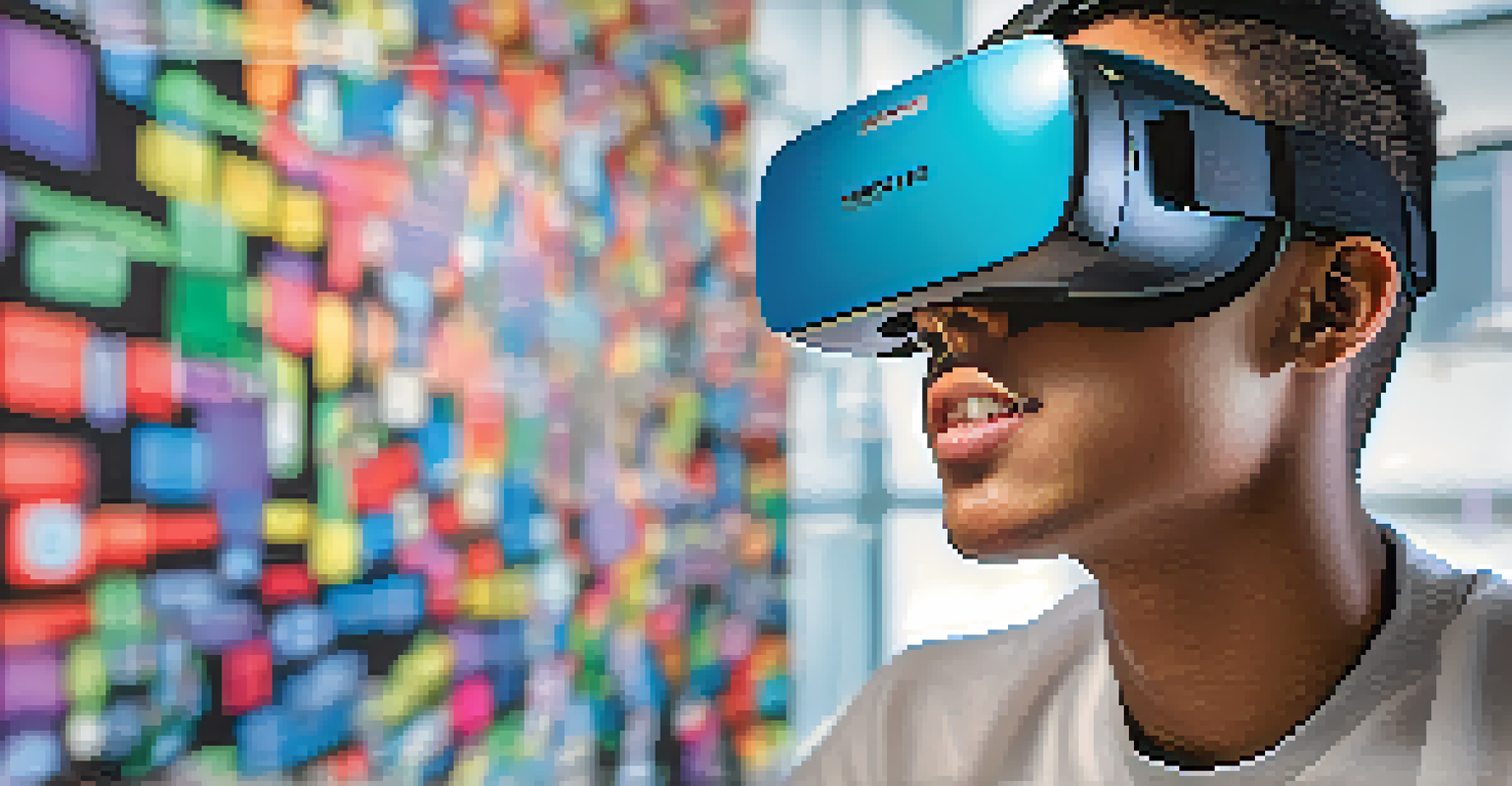Developing Critical Thinking Skills with VR Educational Tools

Understanding Critical Thinking in Education
Critical thinking is the ability to analyze information and make reasoned judgments. In education, it's a vital skill that empowers students to tackle complex problems and think independently. By developing these skills early on, learners can navigate their academic and professional lives more effectively.
Critical thinking is the key to unlocking the door of knowledge.
Traditionally, critical thinking has been nurtured through discussions, debates, and analytical exercises. However, the rapid evolution of technology offers new avenues for enhancing these skills. One of the most promising advancements is the integration of virtual reality (VR) in educational environments.
VR educational tools offer immersive experiences that challenge students to think critically and creatively. By placing learners in dynamic scenarios, they can engage with content on a deeper level, making the learning process both enjoyable and impactful.
How VR Creates Immersive Learning Experiences
VR technology transports students to different environments, from historical sites to scientific laboratories. This immersion enables learners to interact with the material in real-world contexts, enhancing their understanding. For example, a student studying marine biology can explore underwater ecosystems without leaving the classroom.

These immersive experiences encourage students to ask questions and think critically about what they’re observing. Instead of passively receiving information, they become active participants in their learning journey. This shift in engagement can lead to a deeper retention of knowledge and improved analytical skills.
VR Enhances Critical Thinking Skills
Virtual reality offers immersive learning experiences that actively engage students, fostering critical thinking and creativity.
Moreover, VR allows for safe experimentation. Students can conduct virtual experiments or simulations, making mistakes without real-world consequences. This freedom to explore and fail helps cultivate a growth mindset, essential for developing critical thinking skills.
Case Studies: Successful VR Implementations
Several educational institutions have already embraced VR technology to enhance critical thinking. For instance, a school in California integrated VR into its science curriculum, allowing students to explore the human body in 3D. This hands-on approach not only fascinated students but also prompted them to engage in discussions about anatomy and health.
Education is not the filling of a pail, but the lighting of a fire.
Another example comes from a history class that used VR to recreate significant historical events. Students walked through ancient civilizations, interacting with the environment and making choices that influenced their learning. This experiential learning model fostered critical thinking as students debated the implications of their decisions.
These case studies illustrate that when students are placed in immersive environments, they are more likely to develop critical thinking skills. The ability to engage with content actively and contextually transforms the way students learn and reason.
Benefits of VR for Critical Thinking Development
One of the main benefits of using VR in education is the increased engagement it promotes. Students are naturally drawn to technology, and VR provides a captivating way to learn. This heightened interest leads to greater motivation, which is crucial for developing critical thinking skills.
Additionally, VR allows for personalized learning experiences. Students can progress at their own pace, revisiting challenging concepts as needed. This tailored approach supports individual learning styles, ensuring that all students have the opportunity to enhance their critical thinking abilities.
Challenges in VR Education Adoption
Integrating VR into education faces hurdles like high costs, content quality, and accessibility, which need to be addressed for effective implementation.
Finally, VR encourages collaboration among students. Many VR platforms offer multi-user experiences where learners can work together on projects or problem-solving tasks. This collaborative environment fosters communication and teamwork, essential components of effective critical thinking.
Challenges of Implementing VR in Education
Despite its numerous advantages, integrating VR into educational settings isn't without challenges. The cost of VR equipment can be a significant barrier for many schools and institutions. Additionally, not all educators may feel comfortable using new technology, which can hinder effective implementation.
Another challenge is ensuring that the content within VR environments is educationally sound. Poorly designed VR experiences can lead to confusion rather than clarity, undermining the development of critical thinking. Therefore, it's essential to carefully curate and evaluate VR content to ensure it meets educational standards.
Lastly, there are concerns about accessibility. Not all students may have the opportunity to engage with VR due to economic or physical limitations. Addressing these issues is crucial to ensure that all learners can benefit from the advantages of VR in education.
Future Trends in VR and Critical Thinking Skills
As technology continues to evolve, so too will the capabilities of VR in educational contexts. Future developments may include more sophisticated simulations that offer even deeper levels of interactivity. Such advancements could provide students with opportunities to engage in complex problem-solving scenarios that reflect real-world challenges.
Moreover, artificial intelligence (AI) is likely to play a significant role in enhancing VR experiences. AI-driven VR could adapt to individual learners' needs, providing personalized challenges that promote critical thinking. This dynamic approach could lead to even greater engagement and skill development.
Future of VR in Learning Looks Bright
With advancements in technology and AI, the potential for VR to further enhance critical thinking skills in education is promising.
Ultimately, the future of VR in education is bright. With ongoing research and investment, we can expect to see innovative tools that not only enhance critical thinking skills but also prepare students for the challenges of tomorrow.
Conclusion: The Role of VR in Education's Evolution
In conclusion, VR educational tools hold immense potential for fostering critical thinking skills. By offering immersive, engaging experiences, they transform the way students learn and interact with information. As educational institutions continue to explore the possibilities of VR, we can look forward to a more interactive and thoughtful approach to learning.
While challenges exist, the benefits of using VR in education far outweigh the drawbacks. By embracing this technology, educators can create dynamic learning environments that encourage curiosity and analytical thinking. This shift not only enhances student engagement but also prepares them for the complexities of the modern world.

As we move forward, it's essential to prioritize accessibility and quality in VR educational tools. By ensuring that all students have access to these innovative resources, we can foster a generation of critical thinkers ready to tackle tomorrow's challenges.